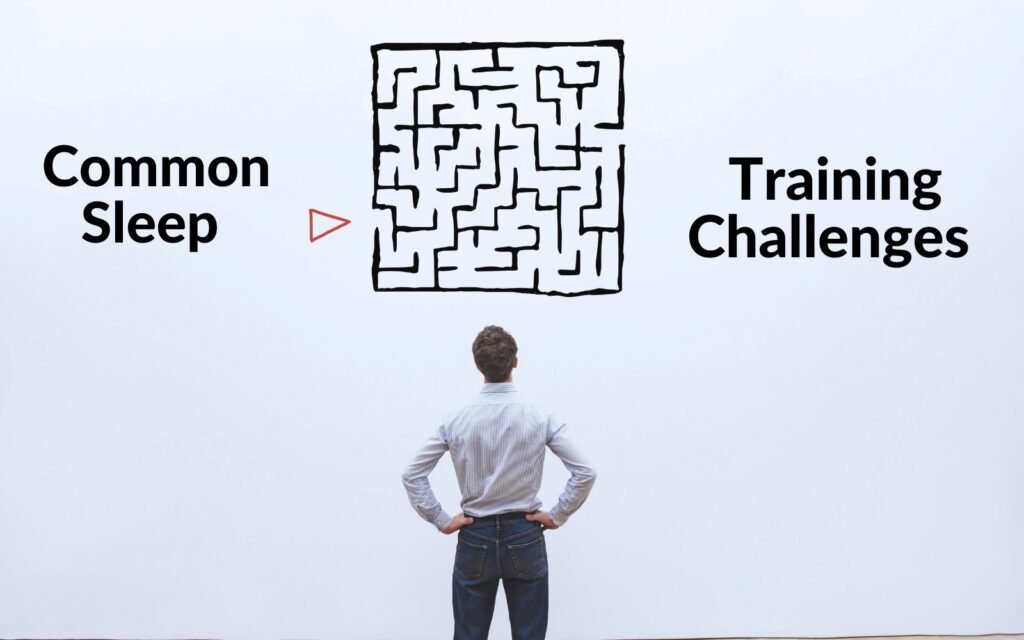Effective Sleep Training Techniques for Babies 2025: Tips to Help Your Baby Sleep Through the Night

Struggling to get your baby to sleep through the night? You’re not alone! Sleep training is a process that teaches babies how to fall asleep independently and stay asleep longer. While it can take some effort and patience, finding the right sleep training method for your family can lead to healthier sleep habits for everyone.
This guide covers popular baby sleep training methods, including gentle approaches and structured routines. Whether you’re curious about the Ferber Method, the Chair Method, or the Fading Method, there’s something here for every parenting style.
Key Takeaways – Sleep Training Techniques for Babies
- Sleep training involves helping your baby develop independent sleep skills.
- Popular methods include the Cry-It-Out, Ferber, and Chair Methods.
- Babies can start sleep training around 4–6 months old.
- Consistency and patience are essential for success.
Why Is Sleep Training Important for Babies?

Babies need a lot of sleep to grow and thrive. However, they often wake up throughout the night due to underdeveloped sleep cycles. Sleep training helps them learn to self-soothe and fall back asleep on their own, leading to better sleep for both baby and parents.
Benefits of Sleep Training:
- Healthier Sleep Cycles: Encourages nighttime sleep and fewer wake-ups.
- Improved Independence: Babies learn to self-soothe without needing to be rocked or fed to sleep.
- Happier Days: A well-rested baby means fewer meltdowns during the day.
- Better Sleep for Parents: Say goodbye to sleepless nights and hello to restful mornings!
Popular Sleep Training Methods for Babies

1. The Ferber Method
The Ferber Method, also called the Check and Console Method, involves letting your baby cry for short, controlled periods before you check on them.
How It Works:
- Put your baby in their crib drowsy but awake.
- Allow your baby to cry for a set amount of time, starting with 3–5 minutes.
- Go in to console them, but avoid picking them up.
- Gradually increase the time between check-ins (e.g., 10 minutes, then 15 minutes).
Why It’s Effective:
This method helps your baby learn to fall asleep on their own while still feeling reassured.
2. Cry-It-Out (CIO) Method
The Cry-It-Out Method involves letting your baby cry until they fall asleep without intervention.
How It Works:
- After your bedtime routine, place your baby in their crib and leave the room.
- Resist the urge to go back in, even if your baby cries.
Why It Works:
Though emotionally challenging, this method can take fewer nights to achieve results compared to other techniques.
3. The Chair Method
This gentle sleep training method involves putting a chair next to your baby’s crib and gradually moving it farther away each night.
How It Works:
- Sit in a chair next to your baby’s crib as they fall asleep.
- Avoid interacting too much-just be a comforting presence.
- Each night, move the chair farther away until you’re out of the room.
Why It’s Effective:
The Chair Method provides a gradual transition to independent sleep while allowing your baby to feel supported.
4. Bedtime Fading
The Fading Method involves gradually adjusting your baby’s bedtime to help them fall asleep faster.
How It Works:
- If your baby resists bedtime, start by putting your baby to bed at a later time when they’re naturally tired.
- Slowly move bedtime earlier by 10–15 minutes every few nights until you reach your desired schedule.
Why It Works:
This method aligns with your baby’s natural sleep cycle, making it a gentle way to sleep train.
5. Pick-Up/Put-Down Method
This technique involves picking up your baby to comfort them when they cry and then putting them back in the crib.
How It Works:
- Let your baby fuss in their crib.
- If they start crying, pick them up to soothe them.
- Once they’re calm, put them back down. Repeat as needed.
Why It’s Effective:
This method may take longer but is perfect for parents who prefer minimal crying.
Tips to Help Your Baby Sleep Through the Night

- Start Sleep Training at the Right Time
Most experts recommend beginning sleep training when your baby is around 4–6 months old. At this age, babies are developmentally ready to learn independent sleep skills. - Establish a Consistent Bedtime Routine
A calming bedtime routine helps signal to your baby that it’s time to sleep. Consider incorporating early steps that support early language development tips, such as singing lullabies or storytelling during bedtime. Try this:
- Bath
- Pajamas
- Story or lullaby
- Put your baby down drowsy but awake
- Create a Sleep-Friendly Environment
- Use blackout curtains to block out light.
- Use white noise to mask household sounds.
- Keep the room cool and cozy.
- Be Consistent
Whichever sleep training method you choose, stick to it! Babies thrive on consistency, and changing the approach mid-way can confuse them. - Monitor Daytime Naps
A balanced daytime nap schedule can ensure that your baby gets enough rest. For parents transitioning through wake windows during night weaning, maintaining consistency is essential for helping your baby adjust to new sleep patterns.
Common Sleep Training Challenges

1. Sleep Regression
Around 4 months or during growth spurts, babies may wake up more frequently. This is normal and temporary-just stay consistent with your sleep training routine.
2. Parental Guilt
Hearing your baby cry can be tough. Remember, you’re teaching them an important skill and fostering independence, which is a key part of building resilience in young children.
3. Night Wakings
If your baby wakes up during the night, guide them back to sleep using your chosen method.
When to Consider a Sleep Consultant

If you’re struggling or feel overwhelmed, hiring a sleep consultant can be a game-changer. These experts can create personalized plans to help your baby sleep better.
Summary
Sleep training can help your baby develop healthy, independent sleep habits, ensuring better rest for the entire family. From the Cry-It-Out Method to the Chair Method, there’s a technique for every parenting style. Start sleep training when your baby is ready, be consistent, and don’t be afraid to seek help if needed. Peaceful nights are just around the corner!
Frequently Asked Questions
1. What Is the Best Way to Sleep Train Your Baby?
The best method depends on your baby’s temperament and your comfort level. Popular methods include the Ferber Method, Chair Method, and Fading Method.
2. When Should I Begin Sleep Training?
Most babies are ready for sleep training around 4–6 months old.
3. How Long Does Sleep Training Take?
It varies. Some babies adjust in a few nights, while others may take longer-up to 2 weeks.
4. Is Crying Normal During Sleep Training?
Yes, crying is part of the process as babies learn to self-soothe. However, you can choose a method with minimal crying, like the Chair or Fading Method.
5. Can Sleep Training Harm My Baby?
No, sleep training is safe and helps your baby learn important sleep skills. Always use age-appropriate methods and consult a pediatrician if you have concerns.





